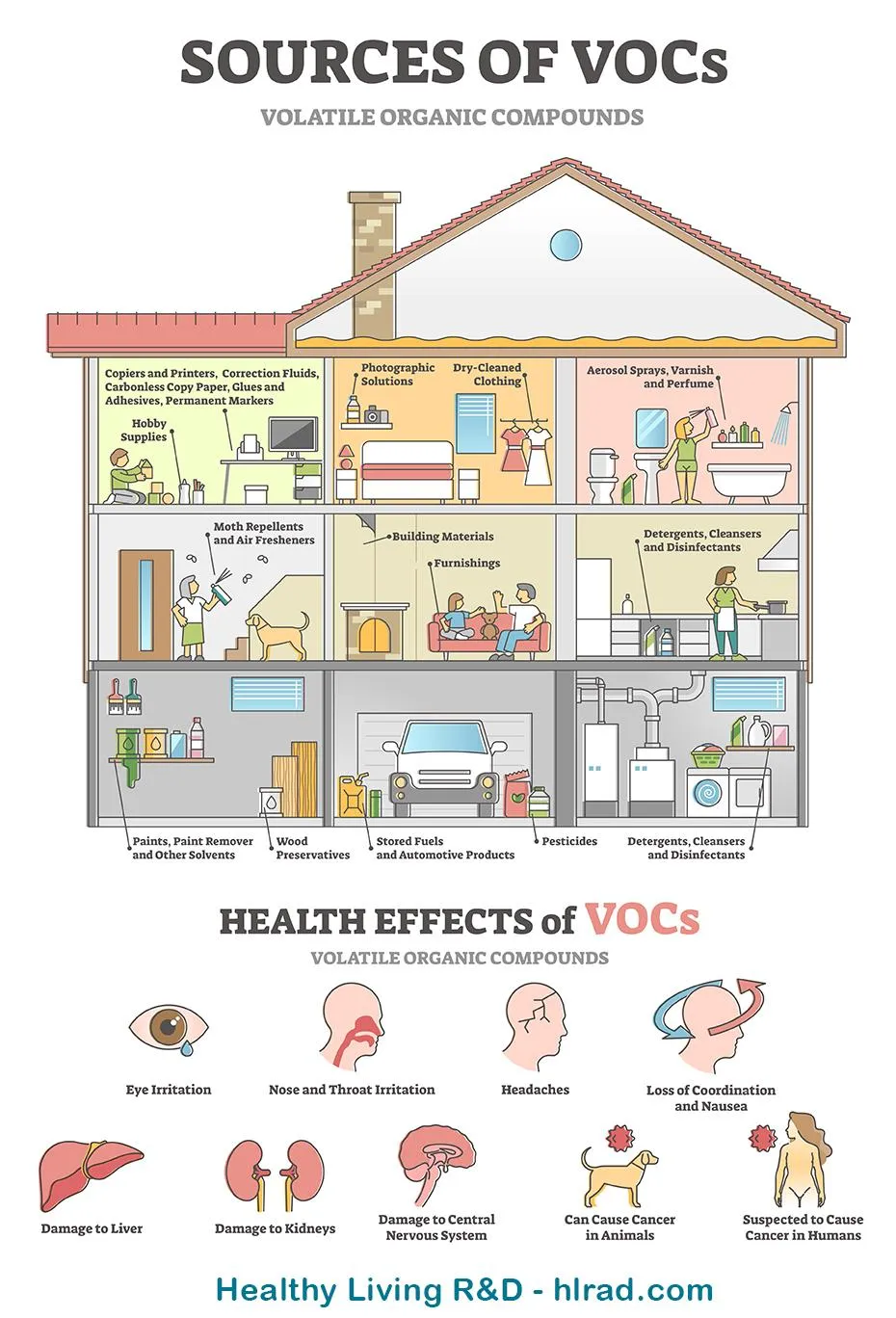VOCs- Volatile Organic Compounds.
Volatile Organic Compounds (VOCs) are invisible, odorless—or sometimes strongly scented—chemicals released into indoor air from everyday products like paint, furniture, flooring, cleaning supplies, and building materials. These airborne toxins can accumulate indoors and have been linked to a wide range of health effects, including headaches, dizziness, allergies, asthma, hormonal disruption, and even long-term risks like cancer. VOCs are one of the most overlooked yet significant contributors to poor indoor air quality. Below, we’ll explore where VOCs come from, how they affect your health, and what steps you can take to reduce your exposure—especially using guidelines set by Building Biology to create a safer, healthier home environment.
Volatile Organic Compounds (VOCs) are a group of organic chemicals that easily vaporize at room temperature. They are found in a variety of products, including paints, varnishes, adhesives, cleaning supplies, and building materials, as well as in automotive and industrial emissions.

Types of VOCs
Common types of VOCs include:
Formaldehyde: Often found in building materials, household products, and tobacco smoke.
Benzene: Present in vehicle exhaust, tobacco smoke, and some industrial emissions.
Toluene: Found in paint thinners, adhesives, and nail polish.
Xylene: Used in the printing, rubber, and leather industries.
Acetone: Common in nail polish removers and paint thinners.
Ethylene Glycol: Found in antifreeze and de-icing solutions.
Why VOCs are Detrimental
VOCs are harmful because they can cause a variety of health problems, both short-term and long-term. They can also contribute to environmental pollution, particularly in the formation of ground-level ozone and smog.
Health Effects:
Short-term exposure:
Eye, nose, and throat irritation
Headaches
Nausea
Dizziness
Worsening of asthma symptoms
Long-term exposure:
Damage to the liver, kidney, and central nervous system
Increased risk of cancer (e.g., formaldehyde and benzene are known carcinogens)
Respiratory issues
Developmental and reproductive toxicity
Environmental Impact:
Air Quality: VOCs contribute to the formation of ground-level ozone and smog, which can lead to respiratory problems and other health issues, as well as harm vegetation.
Water Quality: VOCs can contaminate groundwater and surface water, making it unsafe for drinking and harming aquatic life.
Specific Information from EWG
The Environmental Working Group (EWG) highlights that many VOCs, including those found in cleaning products, paints, and building materials, can significantly impact indoor air quality. Studies have shown that products labeled as "green" and "fragrance-free" emit fewer VOCs compared to conventional products. VOCs from these sources can lead to serious health issues such as cancer, liver and kidney damage, and respiratory problems like asthma
For more information on VOCs and how to minimize exposure, you can visit the EWG website
.
Business name: Healthy Living Research & Development LLC
Business Address: 360 Main Street
Millsboro, DE
Projects and Opportunities
Our Private Community
Courses, Coaching and Resources
DISCLAIMERS
PARTNERS
JV Opportunities
Copyright © 2025 and beyond Healthy Living Research & Development LLC -HLRAD.com . All rights reserved. Healthy Living Research and Development
